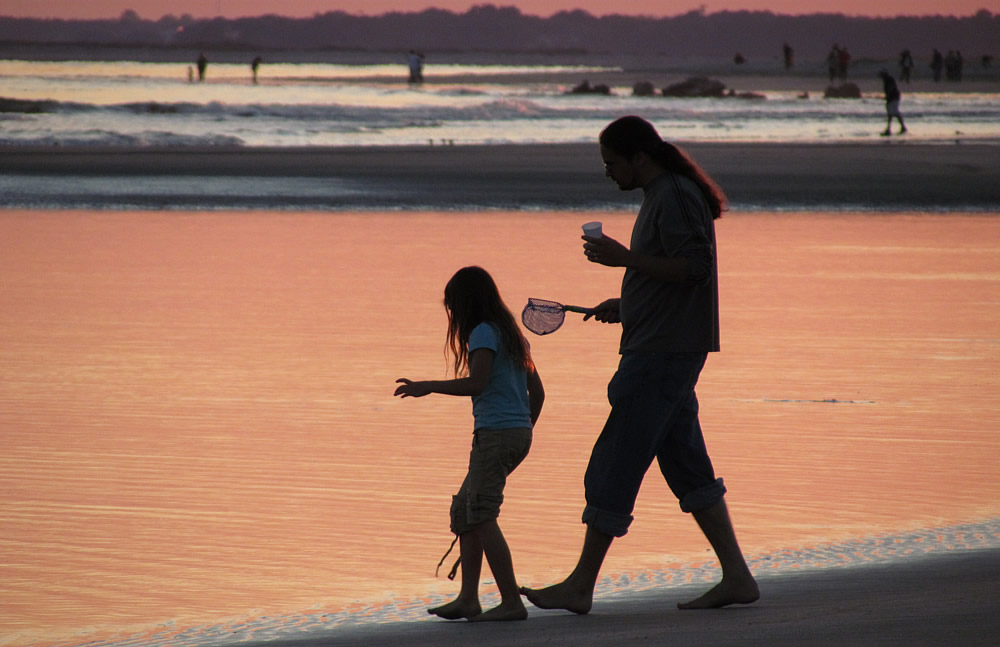 SUNSET SEARCH: This photo of a man and girl combing the beach on Sullivan’s Island captures the fun, lazy of days of summer during a vacation. Photo by Michael Kaynard, Kaynard Photography.
SUNSET SEARCH: This photo of a man and girl combing the beach on Sullivan’s Island captures the fun, lazy of days of summer during a vacation. Photo by Michael Kaynard, Kaynard Photography.
IN THIS ISSUE
PHOTO: Sunset search
FOCUS: Charleston is part of a global community
BRACK: Horne’s emotional pleas merits the state’s thanks
IN THE SPOTLIGHT: SCIWAY
REAL ESTATE: Charleston market hot, but may be undervalued
GOOD NEWS: Almost $2 million raised in mayor’s race
FEEDBACK: Send us a letter
CALENDAR: Minds, butterflies, fish and books
REVIEW: Wolf in White Van
MYSTERY: Where’s this Great Dane?
S.C. ENCYCLOPEDIA: Ku Klux Klan
TODAY’S FOCUS
Charleston is part of a global community
By Kyra Morris, contributing editor
JULY 13, 2015 | My husband and I traveled all over Australia last month. At the beginning of June, only a few people we met were familiar with Charleston, our fair city. By the end of our travels because of the tragedy at Mother Emanuel, most of the people we met knew of Charleston.
 Their comments were kind expressions of sorrow, but also of how they were impressed by the total community support and display of love and unity that Charleston showed to the families of the victims. This unity was felt by the world.
Their comments were kind expressions of sorrow, but also of how they were impressed by the total community support and display of love and unity that Charleston showed to the families of the victims. This unity was felt by the world.
We did that part right. We let the world know that Charleston is not a place of hate. Charleston responded as a whole community with a cornucopia of resources to aid the grieving families. There was a complete integration that was apparent, embracing those that were harmed and denouncing the hate-filled act. This was what the rest of the world saw of Charleston.
Although I enjoy the thought of Charleston becoming a global community, this is not the pathway I envisioned to achieve this goal. There are so many other things I want to write about to show the progress we’ve made in our global presence. We are a tourist mecca. We have international businesses. We have a productive port, and we have our own World Trade Center.
Charleston is in well ensconced as one of the top 10 most desirable cities in the world for tourists to visit. We have a diversity of attractions. The cultural preservation of our history and the architecture welcomes many every year. Our culinary offerings compete with New York and San Francisco, and we have a world-class community of artists and artisans in a variety of fields. The artists and culinary features promote unique shopping experiences.
Boeing is our biggest claim for international business, and there are many others. These businesses bring quality new people to our community. Often, these people are the best and brightest from all over the world. These businesses also attract support businesses that represent different parts of the world.
 Since its founding in 1670, Charleston’s port has been a part of Charleston’s culture. Our deepwater port can manage the large new post-Panamax vessels fully loaded. The five terminals are close to the open sea which makes it very competitive. The port is receiving a lot of accolades for its customer satisfaction and for being a world-class productive container port. The Port of Charleston’s website states this and I have to agree, “[Our] port is a powerful magnet for manufacturing and distribution companies all over the world.”
Since its founding in 1670, Charleston’s port has been a part of Charleston’s culture. Our deepwater port can manage the large new post-Panamax vessels fully loaded. The five terminals are close to the open sea which makes it very competitive. The port is receiving a lot of accolades for its customer satisfaction and for being a world-class productive container port. The Port of Charleston’s website states this and I have to agree, “[Our] port is a powerful magnet for manufacturing and distribution companies all over the world.”
Charleston also has its own World Trade Center, a member of the World Trade Centers Association. This is an initiative of the Charleston Metro Chamber of Commerce. Our World Trade Center provides advocacy, programs and services in support of international trade. It is part of an extensive network of world trade centers throughout the globe and provides the ability to connect businesses in the Charleston region to more than 750,000 potential customers who are members of more than 320 world trade centers in 96 countries.
My whole article was going to be about Charleston as a global city. I wanted to talk specifically about the World Trade Center and why this initiative is important to our community. Then tragedy struck. Charleston was in the world’s eye. We did and are working through this grief, and we are applying the healing touches needed in our community. I am very proud to be a Charlestonian. The picture of love and unity in a Southern U.S. city is not a façade. It is deep in our spirit. This light shines out into the world. This makes us truly a global community!
Kyra Hollowell Morris, a Certified Financial Planner, is CEO of Morris Financial Concepts, Inc., in Mount Pleasant. A national leader in the financial planning profession, she has been named several times by leading magazines as one of the country’s top financial planners.
COMMENTARYHorne’s emotional plea merits the state’s thanks
By Andy Brack, editor and publisher
JULY 13, 2015 | Not enough praise can be heaped on state Rep. Jenny Horne, R-Summerville, for her moving, emotional plea on Wednesday night that refocused House colleagues after hours of debate on removing the Confederate flag off of the Statehouse grounds.
![]() “Thank God for Jenny Horne,” state Rep. James Smith, D-Columbia, said Thursday. “What Jenny said was really right on target and brought the debate where it needed to be.”
“Thank God for Jenny Horne,” state Rep. James Smith, D-Columbia, said Thursday. “What Jenny said was really right on target and brought the debate where it needed to be.”
After a full day of debate as discussion continued on the House floor about a bill that passed 37-3 on Tuesday by the state Senate, Horne took the floor at a pivotal moment to urge House members to pass a “clean” bill — one with no amendments — so that it could go straight to Gov. Nikki Haley to be signed and not have to return to the Senate, creating more delay.
Horne, who reminded colleagues that she was a descendant of Jefferson Davis, president of the Confederacy, said it was time to move on and take down what had become a symbol of hate. Her voice quivered with emotion and strength:
“I cannot believe that we do not have the heart in this body to do something meaningful — such as take a symbol of hate off these grounds on Friday — and if any of you vote to amend, you are ensuring that this flag will fly beyond Friday. And for the widow of Sen. [Clementa] Pinckney and his two young daughters, that would be adding insult to injury — and I will not be a part of it.
“And for all of these reasons, I will not vote to amend this bill today. We may visit this another session, another year. But if we amend this bill, we are telling the people of Charleston: We don’t care about you. We do not care that someone used this symbol of hate to slay [nine] innocent people who were worshiping their God.”
Others who deserve pats on the back for getting House members to move forward and pass a clean bill are former House Majority Leader Rick Quinn, R-Cayce, who worked with House Minority Leader Todd Rutherford, D-Columbia, to develop a compromise that toppled an effort to kill the removal effort by drowning it in amendments. Hats off also to state senators who acted swiftly to send a clear message — a 37-3 vote — that flag removal had become a mainstream movement.
You’ll hear that removing the flag won’t change some attitudes. Maybe. But one thing is for sure — getting rid of it from what should be the neutral ground for our state’s leaders is way better than perpetuating a symbol of a war that ended 150 years ago. Dum spiro spero, South Carolina. Woo hoo.
PEOPLE IN RURAL COUNTIES across South Carolina know the challenges they face.
They know about their high poverty, higher than normal unemployment, challenged schools and need for better health care facilities. They understand how their tax rates are higher than urban areas because of the lack of a broad industrial tax base to help fund local services.
But they also know these problems can be solved. They just need more resources, better infrastructure and more collaboration to get things done.
That crystal clear message came through in three town hall meetings — one each in Bamberg, Allendale and Barnwell counties — put together by the SouthernCarolina Alliance to listen to ideas for change as the organization works to roll out opportunities through a new federal Promise Zone designation.
“If you don’t change, you die,” one woman succinctly said. Almost 300 people turned out at the three sessions — a phenomenal number of leaders, black and white, from a dynamic cross-section of the communities. Their dreams and enthusiasm for the future were contagious. Long ignored by the powers that be, they are starting to see the great possibilities offered by collaborating with new partners and being able to tap into federal grant programs in special ways because of the Promise Zone designation.
Real changes in the six counties of the Promise Zone are possible. But leaders in these counties, just like those in other rural counties across the state, must work together and seize the ripe opportunities that are there for the taking.
Andy Brack is editor and publisher of Charleston Currents and Statehouse Report. You can reach him at: editor@charlestoncurrents.com
IN THE SPOTLIGHTSCIWAY
 The public spiritedness of our underwriters allows us to bring Charleston Currents to you at no cost. Today we shine our spotlight on SCIWAY. Pronounced “sky-way,” SCIWAY is South Carolina’s Information Superhighway — the largest and most comprehensive directory of South Carolina information on the Internet. It includes thousands of links to other South Carolina Web sites, including Charleston Currents, as well as an amazing collection of maps, charts, articles, photos and other resources.
The public spiritedness of our underwriters allows us to bring Charleston Currents to you at no cost. Today we shine our spotlight on SCIWAY. Pronounced “sky-way,” SCIWAY is South Carolina’s Information Superhighway — the largest and most comprehensive directory of South Carolina information on the Internet. It includes thousands of links to other South Carolina Web sites, including Charleston Currents, as well as an amazing collection of maps, charts, articles, photos and other resources.
- To learn more about this extraordinary information hub that 7 million people visit a year, go to: http://www.SCIWAY.com.
Charleston real estate market is hot, but maybe undervalued
By Doug Holmes, contributing editor
JULY 13, 2015 | Last month in my first article for Charleston Currents, I gave you an historical perspective on the Charleston real estate market and a current snapshot of the tremendous buying activity in today’s market. The buying activity has continued its rampage over the last month and prices look very good, but not out of control.
 For the year to date, transactions are up 17.5 percent from 6,432 to 7,560 residential units. We will most likely sell more than 14,000 homes in 2015. That will make it the busiest year since 2006 and the third best year ever in Charleston. Median sales price is up 3.3 percent from $222,900 to $230,200. This is the highest median sales price ever achieved for the Charleston area. The median sales price in 2007 was $210,000.
For the year to date, transactions are up 17.5 percent from 6,432 to 7,560 residential units. We will most likely sell more than 14,000 homes in 2015. That will make it the busiest year since 2006 and the third best year ever in Charleston. Median sales price is up 3.3 percent from $222,900 to $230,200. This is the highest median sales price ever achieved for the Charleston area. The median sales price in 2007 was $210,000.
While median sales price is at an all-time high, we are still undervalued, according to my analysis. I mentioned in last month’s article that I would explain this going forward. We have data back to 1991 on the sales prices in the Charleston market. I have performed regression analysis on those sales numbers to create a trend line. The trend line is formally known as the line of best fit. It is sort of an average line calculated between the previous sales numbers and then extended out into the future. This is a rigorous statistical method and shows that the rate of appreciation for the Charleston market to be 5 percent on a continuously compounded basis. This is quite reasonable considering that the National Association of Realtors quotes an average 4 percent appreciation rate for the national market based on years of evidence.
Charleston, being a coastal city with such a blessed economy, is surely supposed to outperform the national average. During the peak years of 2004 to 2007, our median sales price in Charleston was well above this trend line. That was dangerous and led to a pull back in the 2008 to 2011 period. Since 2011, we have been gaining ground on the trend line, but the median sales price is still well below where it should be.
 The trend line shows that median sales price should be over $250,000 by the end of 2015. Again, currently the median sales price in the Charleston market is $230,200. So, that says to me that we are undervalued and there is still more room for appreciation above the typical 5 percent rate for Charleston.
The trend line shows that median sales price should be over $250,000 by the end of 2015. Again, currently the median sales price in the Charleston market is $230,200. So, that says to me that we are undervalued and there is still more room for appreciation above the typical 5 percent rate for Charleston.
Next month, I will present more data on dollar per square foot sales prices that will show that while median sales prices are at an all-time high, our value has not completely recovered to the heights of the 2004 to 2007 market.
Doug Holmes is a local Realtor with Keller Williams. He also provides markets analysis for a fee to several hundred local real estate agents. He has a bachelor’s degree in physics and math from the College of Charleston as well as a master’s degree in math from the college, where he still teaches a couple of statistics classes in the fall. Visit his website here.
GOOD NEWSAlmost $2 million raised so far in Charleston mayor’s race
Three candidates are dominating fundraising in the 2015 race to replace Charleston Mayor Joe Riley. Less than $65,000 separates them despite their fundraising almost $1.5 million:
- S.C. Rep. Leon Stavrinakis leads the field of seven candidates with $510,628 raised and $400,127.53 on hand, according to campaign disclosures filed by July 10 with the S.C. Ethics Commission.
- Nonprofit leader Ginny Deerin raised $476,316 and had $362,719.53 on hand. In the second quarter, she raised the most money — some $258,521, compared to just over $200,000 for Stavrinakis.
- Charleston Realtor John Tecklenburg isn’t far off the mark with $437,885.24 raised in total and $301,737.27 on hand.
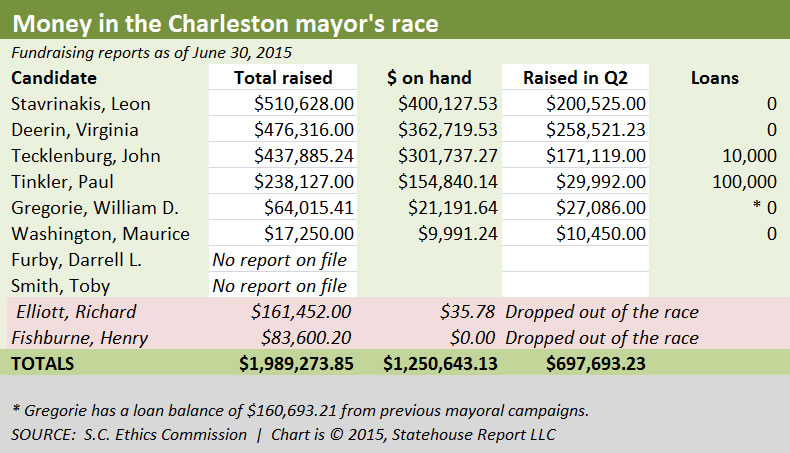
The November election is non-partisan. A runoff is expected.
In other good news:
WINGS for Kids program to connect more students. In response to the recent tragedy at Mother Emanuel AME Church in downtown Charleston, WINGS for Kids last week announced a new initiative to help Charleston students build new friendships and deepen one-on-one relationship skills with other kids across the community through social awareness programming.
“As an organization rooted in social / emotional learning and based in Charleston, WINGS cannot go back to business as usual,” said WINGS CEO Bridget Laird. “We cannot not do more, try harder, dive deeper, and grow bigger. Standing together against racism, we will promote friendship and understanding starting with the open hearts and minds of the future — kids.”
According to a press release, WINGS is the only afterschool program in the country that focuses solely on improving social and emotional learning (SEL) for students. As part of the new Kindred Kids initiative, the four WINGS programs in Charleston will partner with other afterschool programs serving middle-income fourth and fifth graders in the area to bring together kids in the community who may have never crossed paths with before.
Charleston law professor teaches in China. Charleston School of Law Professor James Klein recently returned from a two-month visit at the East China University of Political Science and Law in Shanghai where he taught an intensive six-week course on the U.S. judicial process and civil procedure.
“My goal was to teach the way we teach law courses in the U.S. utilizing the case method and encouraging the student to engage in active classroom discussion, rather than lecturing,” Klein said. “This is different from what the students are accustomed.”
Klein, a distinguished visiting professor in Charleston since 2010, was able to make the visit to Shanghai thanks to being picked by as a Fulbright specialist by the Chinese university. The Fulbright Specialist Program is a highly-esteemed, selective international educational exchange program designed to increase mutual understanding between the people of the U.S. and the people of other countries. More: Charleston School of Law.
FEEDBACKSend us a letter
Rant. Rave. Tell us what you really think. If you have an opinion on something we’ve offered or on a subject related to the Lowcountry, please send your letters of 150 words or less to: editor@charlestoncurrents.com. Our feedback policy.
CALENDARFrom minds and butterflies to fish and books
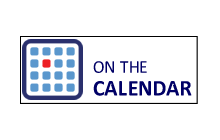 Mastermind Exchange: 6 p.m. to 8 p.m., July 14, at Local Works, 1630-2 Meeting St., Charleston. The Center for Women’s S.C. Women’s Business Center is offering a two-hour event with food & drink to bring seasoned entrepreneurs together to help foster connections and create Mastermind groups for growth. Cost: $30 for C4Women members; $40 others. More info.
Mastermind Exchange: 6 p.m. to 8 p.m., July 14, at Local Works, 1630-2 Meeting St., Charleston. The Center for Women’s S.C. Women’s Business Center is offering a two-hour event with food & drink to bring seasoned entrepreneurs together to help foster connections and create Mastermind groups for growth. Cost: $30 for C4Women members; $40 others. More info.
Butterflies Are Free: 8 p.m., July 18 and 19, Edisto Civic Center, 42 Station Court, Edisto Island. This coming-of-age comedy is staged by Coastal Stage Productions, a new theater and event company based in Ridgeland. Tickets are $15. More info: 912-656-1598.
Fishing tournaments. The county’s monthly fishing tournaments kicked off in May with contests at the Mount Pleasant and Folly Beach piers. Both cast-off tournaments feature several awards and prizes for anglers from 3 years old to seniors. Tournaments in Mount Pleasant are slated for Sept. 5 and Oct. 3. Tournaments are to be held on Folly Beach Pier on July 18 and Aug. 15. More info.
Book sale: July 24-25, John’s Island Regional Library, 3531 Maybank Highway, John’s Island. Prices start at 50 cents for fiction, non-fiction, children’s books and more with proceeds to benefit the Charleston County Public Library. Two-day event plus special member event. More.
Shaking a leg. The Folly Beach Pier is set to have more Moonlight Mixers throughout the summer starting at 7 p.m. A DJ will spin great old tunes to keep your feet moving. Dates are July 24, Aug. 21 and Sept. 18. In Mount Pleasant, the Shaggin’ on the Cooper series will be held July 18, Aug. 15 and Sept. 12. Click here for more.
Natural history exhibit: Through Aug. 10, 2015. “From Land to Sea: 35 Million Years of Whale Evolution” will be featured in The Charleston Museum’s lobby gallery with displays of whale fossils from millions of years ago. There’s limited availability for an overview by Natural History Curator Matthew Gibson on opening night. Learn more.
Bird walks: 8:30 a.m. to noon, every Wednesday and Saturday. This is the time of year that a great variety of migrating birds fly through the Lowcountry so what better time to take part in one of the regular early morning bird walks at Caw Caw Interpretive Center in Ravenel. Pre-registration is suggested. Cost is $5. Walks also are conducted on James Island and Folly Beach. Learn more online.
If you have an event to list on our calendar, please send it to editor@charlestoncurrents.com for consideration. The calendar is updated weekly on Mondays.
REVIEWWolf in White Van
A novel by John Darnielle
![]() Sean Phillips is reclusive due, in large part, to a severe injury he sustained as a teenager. His main contact with the world around him is through Trace Italian, the mail-order role-playing game he created and runs. Troubles arise for Sean when two players, Carrie and Lance, switch their playing from the game world to the real world. As Sean’s story, along with the story of Carrie and Lance, unfolds, the reader is taken on a riveting journey backward through Sean’s life.
Sean Phillips is reclusive due, in large part, to a severe injury he sustained as a teenager. His main contact with the world around him is through Trace Italian, the mail-order role-playing game he created and runs. Troubles arise for Sean when two players, Carrie and Lance, switch their playing from the game world to the real world. As Sean’s story, along with the story of Carrie and Lance, unfolds, the reader is taken on a riveting journey backward through Sean’s life.
Best known as the frontman for the band The Mountain Goats, John Darnielle has written a debut novel that really strikes a chord with the reader. Like the movie Memento, the book begins at the end of the story and works its way backward in time. For a story that you start out knowing the ending, there sure are some interesting twists and unexpected turns!
Wolf in White Van is packed full of thought-provoking circumstances and emotional conundrums. It is an excellent and stimulating book that anyone could enjoy. It will especially appeal to people who like contemporary mystery and role-playing games.
— Ashley Dowdy, Main Library, Charleston, S.C.
 Find this and similar titles from Charleston County Public Library. This item available as a book. To learn more or place a hold, visit www.ccpl.org or call 843-805-6930.
Find this and similar titles from Charleston County Public Library. This item available as a book. To learn more or place a hold, visit www.ccpl.org or call 843-805-6930.
Where’s this great Dane?
This is a different kind of great Dane, but where is it? First to guess gets a pair of tickets to Magnolia Plantation and Gardens or a Charleston RiverDogs’ game. Send your answer to editor@charlestoncurrents.com — and be sure to include your hometown and other contact information.
 Last week’s Mystery was easy for lots of folks who know about Charleston’s famous Magnolia Cemetery. Hats off to Jane Riley Gambrell of Charleston for winning (“Sort of weird, isn’t it, that I know local cemeteries?) tickets to a RiverDogs’ game and for these folks who got the right answer: Chrissy Jackson, Summerville; Marsha Guerard, Chris Brooks and Peter Wentworth, Mount Pleasant; Jim Vanas, North Charleston; and Judith Carberry, Charleston. Thanks all!
Last week’s Mystery was easy for lots of folks who know about Charleston’s famous Magnolia Cemetery. Hats off to Jane Riley Gambrell of Charleston for winning (“Sort of weird, isn’t it, that I know local cemeteries?) tickets to a RiverDogs’ game and for these folks who got the right answer: Chrissy Jackson, Summerville; Marsha Guerard, Chris Brooks and Peter Wentworth, Mount Pleasant; Jim Vanas, North Charleston; and Judith Carberry, Charleston. Thanks all!
- If you have a picture with which you’d like to stump our readers, send it along to editor@charlestoncurrents.com.
Ku Klux Klan
Editor’s note: With so much news in the media about the removal of the Confederate flag, we thought it would be helpful for people to remember how the Klan has terrorized South Carolinians through the years. The recent issue of Statehouse Report includes a story that highlights how votes against removing the flag are clustered in the Upstate, which faced significant Klan activity during and after Reconstruction.
S.C. Encyclopedia | The Ku Klux Klan was a paramilitary organization formed during Reconstruction to oppose the Republican Party and restore white supremacy in the South.
Originally founded by former Confederate general Nathan Bedford Forrest in Tennessee in 1866, it spread to every southern state, including South Carolina, by 1868. Most authorities believe that these organizations were independent of each other, but within South Carolina the Klan clearly showed deference to the leading white Democrats. The Klan, or “Ku-Klux” as it was then called, engaged in a variety of violent actions, such as punishing alleged criminals or settling personal scores, but the vast majority of Klan actions were calculated to weaken the Republican Party by intimidating party leaders. Klansmen often whipped and sometimes killed people they regarded as Republican leaders. Victims of such attacks, or “outrages” in the parlance of the time, were almost always Republicans and were usually African Americans. The Klan was particularly strong in the predominantly white upcountry counties, and York County especially experienced a “reign of terror” in the late 1860s.
The Klan was shrouded in secrecy. Klansmen conducting outrages often went in disguise, the most famous of which consisted of white robes and white conical hoods. Others blackened their faces; still others did not disguise themselves, but rather operated outside their home neighborhoods so as not to be recognized. The suggestion that the white robes evoked superstitious fears in blacks seems to have little empirical justification; if African Americans feared Klansmen, it was not for supernatural reasons. Klansmen were often former Confederate troops, well armed and well trained in combat, and almost always on horseback. Furthermore, they had a well-deserved reputation for ruthlessness.
A typical attack might begin with a late-night raid on the home of a local Republican activist. The worst cases left victims disabled or dead; in other cases only threats were used. Most often the victim would be taken from his house and tortured, often by whipping, and ordered to renounce the Republican Party. Klansmen sometimes confiscated items such as guns or Republican electoral ballots, and they occasionally stole money. There were cases in which wives or children were beaten as well. The most frequent targets, however, were politically active men. Klansmen often justified their actions to the victim, telling him of some wrong he had done; usually the victim’s offense was a transgression against white supremacy. When the victim was white, he was often berated for advocating racial equality; when black, for thinking himself the equal of a white man.
Republicans defended themselves as circumstances permitted. Those who were wealthy or who enjoyed high official positions might arrange to have armed guards protect their homes. Humbler Republicans, on hearing that they were being targeted, might choose to sleep in the woods for a time. Residence in Columbia generally protected state legislators, but at least three (the native white Republicans Solomon Dill, James Martin, and Joseph Crews) were gunned down on highways traveling to or from the capital, and another (Benjamin Franklin Randolph, a mulatto from Ohio) was killed in broad daylight while boarding a train.
Democratic leaders frequently denied both the existence of the Klan and the reality of alleged outrages. When presented with indisputable evidence that attacks had occurred, they typically blamed “a few lawless men” for the violence, denying that there was any widespread conspiracy. Tradition holds that the Klan was populated by poor whites. It is more likely, however, that all strata of society were represented and that leadership in the Klan was provided by members of the gentry. Some known leaders included J. Rufus Bratton and James Avery of York and J. Banks Lyle of Spartanburg; other prominent Democrats, such as David Wyatt Aiken, were accused or even indicted for Klan-related violence. Furthermore, even if they or their sons were not members, many white leaders of the state openly sympathized with those being prosecuted on Ku-Klux charges. Wade Hampton III, Armistead Burt, and other leading citizens used their money and influence to provide the best attorneys possible for alleged Klansmen.
In 1871 and 1872 the administration of President Ulysses S. Grant made a large-scale effort to break the Klan, making an example of South Carolina. Declaring a state of rebellion, the president suspended the writ of habeas corpus in the counties of Spartanburg, Union, York, Chester, Laurens, Newberry, Fairfield, Lancaster, and Chesterfield. Federal prosecutors came south to indict hundreds of accused offenders. The size of the task overwhelmed the justice system, and few Klansmen were convicted. Historians debate the efficacy of the administration’s actions. The Klan as an organization ceased to exist, and many of its leaders fled the state. Nevertheless, political violence continued and eventually toppled the Reconstruction regime.
Another organization called the Ku Klux Klan was founded in 1915 after the success of the film Birth of a Nation, which glorified the Reconstruction Klan. This later Klan added an animus toward Jews and Catholics to the original motivation of preserving white supremacy. The twentieth-century Klan grew to include as many as three million members before it disbanded in the 1940s. Klan groups appeared again during the desegregation crisis of the 1960s and have occasionally been heard from since. The twentieth-century Klan existed in South Carolina but was not as prominent or politically powerful as in other states.
– Excerpted from the entry by Hyman S. Rubin III. To read more about this or 2,000 other entries about South Carolina, check out The South Carolina Encyclopedia by USC Press. (Information used by permission.)
OUR UNDERWRITERS
Charleston Currents is an underwriter-supported weekly online journal of good news about the Charleston area and Lowcountry of South Carolina.
- Meet our underwriters
- To learn more about how your organization or business can benefit, click here to contact us. Or give us a holler on the phone at: 843.670.3996.
ABOUT US
Charleston Currents offers insightful community comment and good news on events each week. It cuts through the information clutter to offer the best of what’s happening locally.
- Mailing address: O. Box. 22261 | Charleston, SC 29413
Phone: 843.670.3996
Charleston Currents is provided to you twice a week by:
- Editor and publisher: Andy Brack, 843.670.3996
- Contributing photographer: Michael Kaynard
- Contributing editor, real estate: Doug Holmes
- Contributing editors, seniors: Catherine LaFond, Mary Ross McQuage
- Contributing editor, money: Kyra Morris
- Contributing editor, Palmetto Poem: Marjory Wentworth
SUBSCRIBE FOR FREE
Subscriptions to Charleston Currents are free.
- Click here to subscribe.
- Unsubscribe. We don’t want to lose you as a reader of Charleston Currents, but if you must depart, please click here.
© 2008-2015, Statehouse Report, LLC. All rights reserved. Charleston Currents is published every Monday by Statehouse Report LLC, PO Box 22261, Charleston, SC 29413.


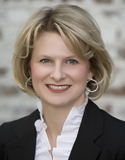
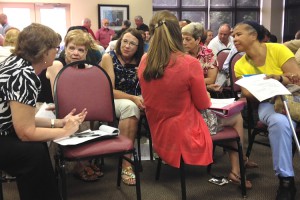
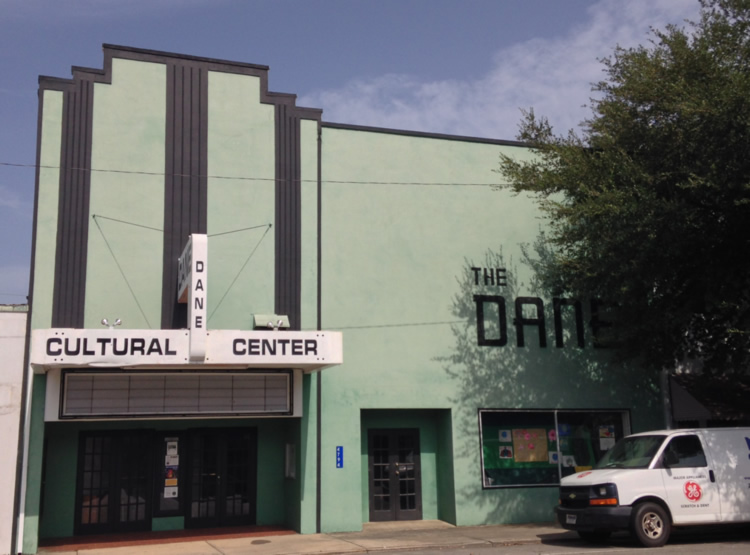
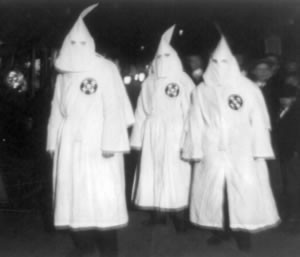

 We Can Do Better, South Carolina!
We Can Do Better, South Carolina!
























